
Strategies to take down the N1 final boss.
Way back in 2009 I took my first stab at the highest level Japanese Language Proficiency Test (JLPT), which was Level 1 back then and is now “N1.”
And I failed. I never tried again, until last year. This time around, I was determined to pass.
After six months of studying, a hectic test day, and waiting weeks for the results, this came in the mail.
▼ I’d passed! Crushing the reading comprehension section with a perfect score, knocking out vocabulary/grammar, and… well, passing listening.
There are a multitude of JLPT strategy guides out there, but I’d like to share my experience in how I prepared for the test, since I feel like I did a few things differently.
I’ll go over each section of the test individually (vocabulary, grammar, reading and listening) and outline what I did to practice. Feel free to try them out for yourself or experiment with other methods. There’s no one correct way to pass the JLPT — finding whatever method works best for you is best!
One note before we start: for those unfamiliar with the JLPT, it has five levels, ranging from N5 (the easiest) to N1 (the hardest). If you’re not sure which level you should take, the official JLPT website has some sample questions to try out.
As a general rule of thumb though, if you don’t regularly interact with native Japanese materials (such as reading articles in Japanese, or watching media in Japanese without subtitles) then I would recommend not going for N1 right away.
So let’s get started!
Part 0: Anki
Right off the bat, Anki is the reason I passed the JLPT. It’s a digital flashcard program that automatically spaces out cards for you to do each day so that you get maximum memory strengthening with minimum effort.
Maybe some people can study tons of vocabulary and grammar points and just remember them easily, but for me unless I make flashcards, I forget them after a few days. As long as I just reviewed whatever cards Anki had prepared for me each day, even if it took a while to get through them, everything eventually stuck and I couldn’t forget the info if I tried.
You can download Anki here. And remember, there’s no need to sit down for an hour straight and do all your cards at once if you don’t want to. You can get Anki for your mobile device, or sync your deck to Ankiweb, and spread out your cards throughout the day.
Personally I divided my different types of Anki cards into different decks, as you can see in the screenshot, but feel free to use whatever organization you’d like.
I’ll be referencing how to make Anki cards for each specific section of this article. Of course you can ignore those parts if you’re not interested… but do so at your own risk!
Part 1: Vocabulary
For vocabulary, I used the textbook in the photo above: Zettai Goukaku! Tettei Toreeningu Nihongo Noryoku Shiken N1 Moji Goi (Amazon Japan).
True to its name, it is extremely tettei (“thorough”). It has 92 lessons with dozens of vocabulary and 12 sample questions each, three “mini” tests with 60+ sample questions, and five “full” tests of 25 questions that are the same format as the real N1 test.
Not only that, but all the vocabulary words are divided into one, two, and three star sections. Three-star words have appeared on previous tests (highest priority), two-star words are part of the old JLPT Level 1 vocabulary list (high priority but may not appear on the current N1 test), and one-stars are high-level words that might appear and are generally good to know (medium priority).
For me, I did one lesson or test each day, inputting into Anki every word I didn’t know and every question I got wrong. Some days it was a lot, but the star system helped: I always put in the three and two-star words, but if I was mentally exhausted then I’d skip some of the one-star ones.
I used two ways of putting vocabulary cards into Anki.
▼ For the kanji section, just the kanji on the front and the reading/meaning on the back.
▼ But for other sections, where the words are similar and depend on context, I put the sentence on the front and the correct answer on the back with some wrong answer reminders.
This might seem like a lot, and it is, but the vocabulary section is specifically designed to be tricky.
You might be able to figure out an unfamiliar word like 割り切る in regular context, but when a JLPT question is specifically written to try and trip you up, suddenly it’s going to be very hard to remember the difference between 割り切る and 割り込む and 打ち込む and 打ち切る.
But if you put them into Anki and drill them every day, then you’ll be able to breeze through the vocabulary section no problem!
Part 2: Grammar
For grammar, I used the quiz book in the picture above: Shin Nihongo 500 Mon N1 (Amazon Japan link).
The quiz book was okay. I like how it comes pre-divided into questions to do each day/week, and that it tests kanji/vocabulary in addition to grammar, but from my experience the kanji/vocabulary questions were laughably easy. The grammar questions were fine, but they’re only 1/3 of the book, so it’s more like 170 or so questions and not the full 500.
The book has good explanations for each question though, plus it gives extra example sentences, so lots of fodder to put into Anki for sure.
Instead, what was much more helpful for me was the N1 grammar YouTube series by Deguchi Sensei.
▼ Check out the N1 grammar playlist here.
Each video he goes over the grammar point in detail, gives lots of examples of how it’s used, then ends with a sample question. It may seem like he goes into too much detail, but knowing what specific situations you can/can’t use certain grammar points is crucial to doing well on this part of the test.
For example, what verb tenses come before/after using が速いか? And what specific nouns can be used with まみれ versus だらけ?
Best of all, it’s all in Japanese, and there’s tons of Anki-fodder in every video.
▼ A grammar card for からする. I put a reminder of how it’s different from からある on the back, but don’t put too much info or you won’t bother to read it.
I went through two videos per day, putting in at least two sentences per grammar point. When I finished the N1 playlist, I also went through his N2 playlist too, since a lot of those grammar points can come up on N1, especially in the listening section.
For example, do you know the difference between 次第 and 次第に and 次第で and 次第では? That’s N2 level and definitely good to brush up on!
Part 3: Reading Comprehension
For reading comprehension, I didn’t really use any special tricks: I just read a lot to practice.
I think a lot of Japanese learners often skim over words they don’t know or sentences they don’t understand when reading, but to practice for N1 you have to make sure you understand everything.
To that end, it doesn’t really matter what you read to practice, so long as you’re reading something native, difficult, and making sure you’re understanding it thoroughly. If you’re looking for something that’s a little fun to take the edge off though, I recommend these three books that I personally read:
- Tokage by Banana Yoshimoto. Easy-ish stories about relationships and a pinch of magic.
- Zero no Tsukaima by Noboru Yamaguchi. A medium-level-difficulty isekai novel.
- Gyakusatsu Kikan by Project Itoh. A difficult sci-fi novel about the morality of killing.
Again, those are just some that I’ve personally read, feel free to pick up whatever you’d like. The important part is putting sentences you don’t understand into Anki, like this:
▼ A sentence from another novel, Eighty-Six. Referencing the English translation can be a great help if you get really stuck on a sentence.
Making an account on a website like HiNative or Tandem is also great to ask native speakers when you don’t understand something. Just be sure to give back to them too.
One last thing to keep in mind: if you’re reading something in Japanese and you’re not enjoying it, try to push a little further ahead. The dry readings on the test are likely not going to be much more interesting, so having some practice overcoming boredom and deducing what’s going on anyway can be very beneficial.
That’s what helped me get a perfect score on this section, since I had so much experience pushing through and forcing myself to understand texts that initially seemed frustratingly cryptic.
Part 4: Listening Comprehension
For listening comprehension, you can put audio files into Anki the same as any other card. Like in the screenshot above, just click the paperclip to put any sort of media such as audio, images, or video into Anki.
For my audio cards, I put the audio file on the front, the transcription/hard words on the back, and reviewed them that way. Mainly I focused on putting in audio files from practice JLPT tests, but pretty much any Japanese audio that you want to hear over and over again until you master can work fine.
As for the actual listening comprehension part of the test itself, pretty much anything can come up content-wise, but the test follows the same format every time, so if you do some practice tests you can get a feel for common patterns.
For example, the last two listening questions are almost always long conversations about four different things (like four different types of vacuum cleaners). Then at the end, you have to pick which of the four items the people are interested in.
If you have experience taking the test multiple times, you’ll know to just divide your paper into four squares, label each one with the item they’re talking about, write down every little thing they mention about that item, then simply cross out/circle the item when someone talks about not wanting/wanting it.
Other test takers who didn’t practice as much might not know that, and they’ll be left trying to remember if it was vacuum number two or three that was yellow, since they didn’t think that would be important until the woman said she wants a vacuum that matches her yellow curtains.
▼ Here’s what that last section from a practice test looked like for me. It’s a mishmash of English/Japanese, and I can’t read it now, but it worked great at the time.
Part 5: Practice Tests
Speaking of practice tests, far and away the most important part of preparing for the JLPT is to take as many practice tests as you possibly can.
I personally used the materials in the picture above: official reprints of previous years’ JLPT tests (Amazon Japan, Amazon Japan), shown on the right, and the textbook Hajimete no Nihongo Noryoku Shiken Gokaku Mogi N1 (Amazon Japan), on the left. The two official test reprints had one test each and no explanations, whereas the textbook had three tests and lots of detailed explanations.
Additionally, I also took four one-hour mock JLPT N1 exams put out by Language Plus One, which were excellent. This semester they’re offering an N1 training course that includes three one-hour mock tests, and if you’re interested you can send them a message at the e-mail address there.
The more practice tests you can do, the better. And of course, put every question you get wrong into Anki, and do whatever reviews it tells you to do every day.
▼ My Anki stats. From 30 weeks ago to 10 weeks ago was when I was studying a lot, doing hundreds of cards per day. If I can hit 100 percent days studied, so can you!
And that’s about it! The JLPT N1 might seem crazy difficult, and in some ways it is, but it’s far from impossible. It’s just a matter of practicing enough, building up your confidence, and getting a good night’s sleep the day before.
Oh, and also, just be sure not to get kicked out on of the classroom on test day because you wore your mask wrong.
Photos: ©SoraNews24
Top image: Pakutaso (Edited by SoraNews24)
● Want to hear about SoraNews24’s latest articles as soon as they’re published? Follow us on Facebook and Twitter!





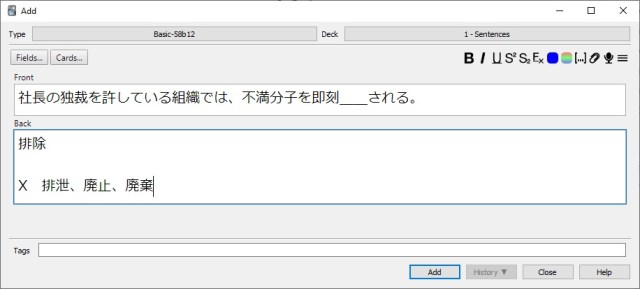
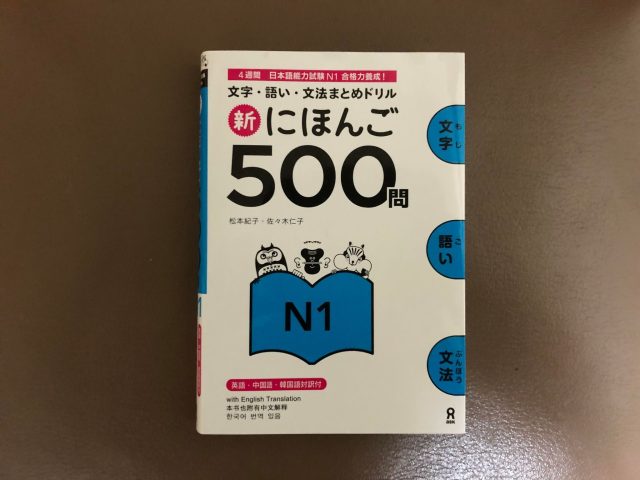



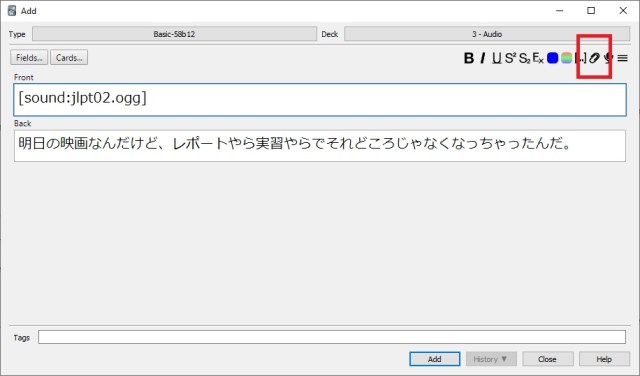


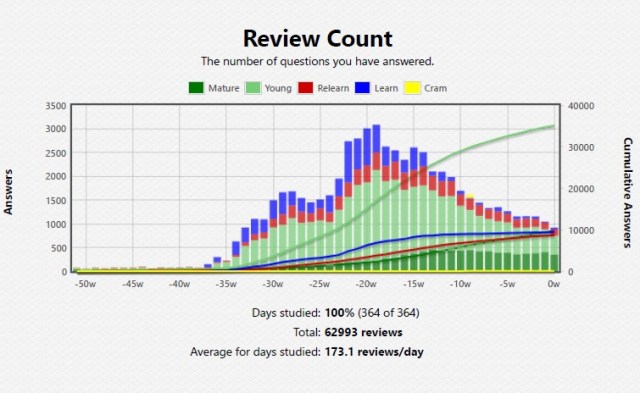
 RocketNews24’s six top tips for learning Japanese
RocketNews24’s six top tips for learning Japanese What’s wrong with English education in Japan? Pull up a chair…
What’s wrong with English education in Japan? Pull up a chair… Japanese Twitter user gives perfect comeback when grandma starts hating on video games
Japanese Twitter user gives perfect comeback when grandma starts hating on video games Learn Japanese through ridiculous manga: A Tick on Titan 【Episode #3】
Learn Japanese through ridiculous manga: A Tick on Titan 【Episode #3】 Learn Japanese through ridiculous manga: Narutoe 【Episode #2】
Learn Japanese through ridiculous manga: Narutoe 【Episode #2】 Where’s the happiest place for foreigners to live in Japan? Study investigates
Where’s the happiest place for foreigners to live in Japan? Study investigates Sushi Bears restaurant opens in Tokyo, offers exactly what its name promises【Photos】
Sushi Bears restaurant opens in Tokyo, offers exactly what its name promises【Photos】 One Japanese man has eaten at the same beef bowl restaurant for over 1,800 days in a row
One Japanese man has eaten at the same beef bowl restaurant for over 1,800 days in a row Secret-identity J-pop singer Ado to hold handshake event with surreal setup to hide her face
Secret-identity J-pop singer Ado to hold handshake event with surreal setup to hide her face Starbucks Japan is calling it quits with paper straws
Starbucks Japan is calling it quits with paper straws Is Burger King Japan sending subliminal messages in its packaging for the new “Top” One Pounder?
Is Burger King Japan sending subliminal messages in its packaging for the new “Top” One Pounder? Yamagata cherries fetch record-breaking price at wholesale market’s first auction of the year
Yamagata cherries fetch record-breaking price at wholesale market’s first auction of the year Studio Ghibli heroine cardigans give you warmth and strength to face everyday challenges
Studio Ghibli heroine cardigans give you warmth and strength to face everyday challenges Why are people moving in droves to Fukuoka Prefecture? We asked someone who did for some insight
Why are people moving in droves to Fukuoka Prefecture? We asked someone who did for some insight Biking around Tama Lake: A super-easy, super-relaxing afternoon getaway from downtown Tokyo【Pics】
Biking around Tama Lake: A super-easy, super-relaxing afternoon getaway from downtown Tokyo【Pics】 J-pop mega star Ado reveals she’s been living in the U.S., may not understand language acquisition
J-pop mega star Ado reveals she’s been living in the U.S., may not understand language acquisition Japan’s most popular castle raising ticket prices by up to 200 percent for non-local tourists
Japan’s most popular castle raising ticket prices by up to 200 percent for non-local tourists Daiso has giant new branch in middle of Tokyo’s Shinjuku neighborhood (and another beneath it)
Daiso has giant new branch in middle of Tokyo’s Shinjuku neighborhood (and another beneath it) Japan’s top 10 food travel destination prefectures【Survey】
Japan’s top 10 food travel destination prefectures【Survey】 Tough times for Japanese pubs as izakaya bankruptcies come at highest rate in more than a decade
Tough times for Japanese pubs as izakaya bankruptcies come at highest rate in more than a decade Studio Ghibli coasters keep your drinks hot and your heart warm this winter
Studio Ghibli coasters keep your drinks hot and your heart warm this winter Furikake rice seasoning sales are soaring, which is bad news for Japan as a whole
Furikake rice seasoning sales are soaring, which is bad news for Japan as a whole Studio Ghibli releases new Totoro and Jiji hourglass timers in Japan
Studio Ghibli releases new Totoro and Jiji hourglass timers in Japan Possessing Harry Potter’s Sword of Godric Gryffindor is now illegal in Japan
Possessing Harry Potter’s Sword of Godric Gryffindor is now illegal in Japan One of Japan’s most beautiful hot spring towns announces new limits on number of day trippers
One of Japan’s most beautiful hot spring towns announces new limits on number of day trippers Uniqlo announces first-ever collaboration with horror manga master Junji Ito【Photos】
Uniqlo announces first-ever collaboration with horror manga master Junji Ito【Photos】 Ghibli’s Princess Mononoke teams up with Foxfire for outdoor apparel collaboration【Photos】
Ghibli’s Princess Mononoke teams up with Foxfire for outdoor apparel collaboration【Photos】 Studio Ghibli releases new range of cardigans for anime fans
Studio Ghibli releases new range of cardigans for anime fans Japanese job-quitting service contacted by other job-quitting service because employee wants to quit
Japanese job-quitting service contacted by other job-quitting service because employee wants to quit McDonald’s new Happy Meals offer up cute and practical Sanrio lifestyle goods
McDonald’s new Happy Meals offer up cute and practical Sanrio lifestyle goods Foreign tourists on Shinkansen bullet train break suitcase etiquette, angering local passengers
Foreign tourists on Shinkansen bullet train break suitcase etiquette, angering local passengers [Deleted] Article written for April Fool’s Day 2018
[Deleted] Article written for April Fool’s Day 2018 Japanese government to make first change to romanization spelling rules since the 1950s
Japanese government to make first change to romanization spelling rules since the 1950s Foreigner’s request for help in Tokyo makes us sad for the state of society
Foreigner’s request for help in Tokyo makes us sad for the state of society Japanese convenience store Family Mart announces abolishment of eat-in spaces
Japanese convenience store Family Mart announces abolishment of eat-in spaces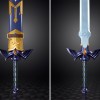 Life-size vibrating Legend of Zelda Master Sword for sale from Nintendo【Photos】
Life-size vibrating Legend of Zelda Master Sword for sale from Nintendo【Photos】 Princesses, fruits, and blacksmiths: Study reveals the 30 most unusual family names in Japan
Princesses, fruits, and blacksmiths: Study reveals the 30 most unusual family names in Japan Studio Ghibli releases free-download board game — Here’s how to play it without reading Japanese
Studio Ghibli releases free-download board game — Here’s how to play it without reading Japanese Learn Japanese through ridiculous manga: Death Vote 【Episode #6】
Learn Japanese through ridiculous manga: Death Vote 【Episode #6】 English conversation school in Japan has clever reminder that students don’t have to be perfect
English conversation school in Japan has clever reminder that students don’t have to be perfect Study reveals too much Internet and video games is bad for your grades
Study reveals too much Internet and video games is bad for your grades Five magic Japanese phrases to know before starting a job in Japan
Five magic Japanese phrases to know before starting a job in Japan “We wasted so much time in English class” — Japanese Twitter user points out major teaching flaw
“We wasted so much time in English class” — Japanese Twitter user points out major teaching flaw Japanese mom praises hard-studying teenage son…for his Pokémon notes?!?
Japanese mom praises hard-studying teenage son…for his Pokémon notes?!? Japan has a cat aptitude test to show off how much you know about our feline friends
Japan has a cat aptitude test to show off how much you know about our feline friends Seven mistakes foreigners make when speaking Japanese—and how to fix them
Seven mistakes foreigners make when speaking Japanese—and how to fix them “Recycling in Japan” or “Reasons to get it right and avoid eternal shame”
“Recycling in Japan” or “Reasons to get it right and avoid eternal shame” Bizarre English test in Japan asks students about winged vegetables, launches new meme
Bizarre English test in Japan asks students about winged vegetables, launches new meme Japanese student’s English homework captures futility of life
Japanese student’s English homework captures futility of life If this adorable Shiba dog can learn to speak a word in Japanese (and he has), so can you【Video】
If this adorable Shiba dog can learn to speak a word in Japanese (and he has), so can you【Video】 Over half of Japanese students in nationwide test score zero percent in English speaking section
Over half of Japanese students in nationwide test score zero percent in English speaking section Dark Horizon textbooks go beyond “Hello my name is…” to “Who are you calling a bitch, bitch!”
Dark Horizon textbooks go beyond “Hello my name is…” to “Who are you calling a bitch, bitch!”
Leave a Reply